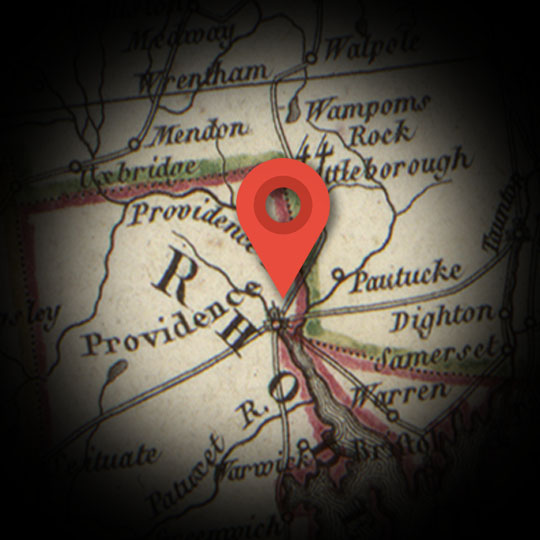PROVIDENCE
Explore
During the United States’ Founding Period, Rhode Island was often considered something of the black sheep of all its sister states. “Rogue Island,” as a Boston paper once put it, was frequently defamed by Founding Fathers from George Washington to Benjamin Rush to Thomas Jefferson.
Even though it was one of the places where independence from Great Britain was locally declared, Rhode Island was the only state that failed to send delegates to the 1787 Convention that composed the U.S. Constitution. Many of its agrarian leading men opposed ratification, too. And it was the last of the “Old Thirteen” to begrudgingly join the Union on May 29, 1790—almost two years after the document went into effect.
Rhode Island was out of step with other states in another way.
Rather than having a single capital, the state government would periodically assemble in different locations at different times. Providence would not become the states single and sole capital until 1900.
Still, Providence happened to be the home of the state governor, Arthur Fenner, when Alexander Hamilton showed up in the state looking for him in July, 1800.
Fenner hailed from a prosperous and old-stock Rhode Island family that had played leadership roles in the state since the 1620s. Since Fenner was as politically active and weighty a man as it was possible to be in the state, he had also served as a member of the Electoral College in the last presidential election, in 1796. Fenner had cast his lot for John Adams. And that was exactly why Hamilton arrived in Providence to hunt him down, unexpected, at his house (known locally as “the castle”) that summer morning.
Hamilton was on a tour of several New England states. Ostensibly, he was traveling oversee the disbanding of the Provisional Army (for more background, see Oxford). But in reality, Hamilton was on a political mission conspiring against his rival in the Federalist Party, John Adams. It was Hamilton’s goal to build support for another Federalist candidate, Charles Cotesworth Pinckney of South Carolina—whom Hamilton reckoned to be the only Federalist capable of beating Thomas Jefferson at the ballot box that coming election season.
Hamilton showed up at Fenner’s door in his sparkling general’s uniform, with his allies and military entourage glowering behind him. At his side was his Rhode Islander friend Jeremiah Olney, with whom Hamilton had fought side-by-side at the punishing Battle of Monmouth, and with whom he had worked closely during his time as Secretary of the Treasury. The Revolutionary War vet Olney had been made Collector for the port of Providence in 1790.
Governor Fenner was very much taken aback by Hamilton’s blindsiding him this day. With his feathers so ruffled, he was not in an accommodating mood when Hamilton began hectoring him about Adams, Jefferson (whom Hamilton called “a man of no judgment”), and C.C. Pinckney. Hamilton was smarting over the fact that Adams, by deciding to go the diplomatic route in the U.S.’s simmering conflict with France, was stealing away Hamilton’s chance at future military glory. Fenner, who seems to have barely been a Federalist at all, had, in fact, recently taken an even more enthusiastic shine to Adams than before for exactly the same reasons that had gotten Hamilton so hot under the collar. Hamilton was wholly unsuccessful in his attempts to persuade or intimidate Fenner. Soon, reports of the encounter leaked into the newspapers, and Jefferson supporters lambasted Hamilton for what they felt were bombastic and underhanded machinations.

TIME FRAME:
June 25-27, 1800
